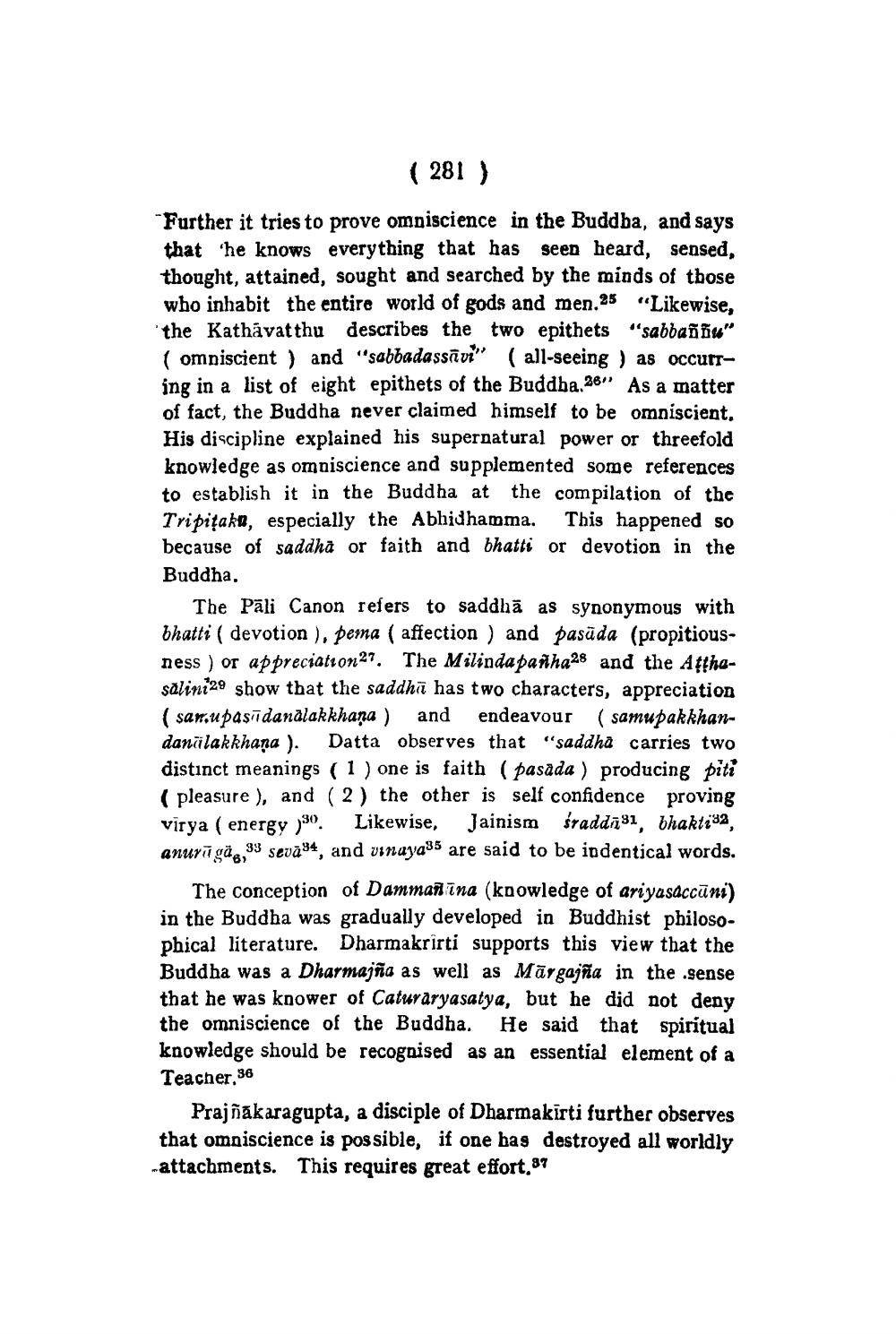________________
( 281 )
Further it tries to prove omniscience in the Buddha, and says that he knows everything that has seen heard, sensed, thought, attained, sought and searched by the minds of those who inhabit the entire world of gods and men.25 "Likewise, 'the Kathāvatthu describes the two epithets "sabbania" ( omniscient ) and "sabbadassīvi" (all-seeing ) as occurring in a list of eight epithets of the Buddha.28" As a matter of fact, the Buddha never claimed himself to be omniscient. His discipline explained his supernatural power or threefold knowledge as omniscience and supplemented some references to establish it in the Buddha at the compilation of the Tripitaka, especially the Abhidhamma. This happened so because of saddha or faith and bhatti or devotion in the Buddha,
The Pāli Canon refers to saddhā as synonymous with bhatti ( devotion ), pema ( affection) and pasūda (propitiousness) or appreciation27. The Milinda panha28 and the Atthesalini29 show that the saddha has two characters, appreciation (saw.upasīdanalakkhana) and endeavour (samupakkhandanülakkhana ). Datta observes that "saddha carries two distinct meanings (1) one is faith (pasada ) producing piti (pleasure ), and ( 2 ) the other is self confidence proving virya (energy 30. Likewise, Jainism sraddasi, bhakti32, anuri gä6,98 sevā94, and vinaya35 are said to be indentical words.
The conception of Damman ina (knowledge of ariyasaccūni) in the Buddha was gradually developed in Buddhist philosophical literature. Dharmakrirti supports this view that the Buddha was a Dharmajña as well as Mārgajña in the sense that he was knower of Caturaryasatya, but he did not deny the omniscience of the Buddha. He said that spiritual knowledge should be recognised as an essential element of a Teacher, 36
Prajñākaragupta, a disciple of Dharmakīrti further observes that omniscience is possible, if one has destroyed all worldly attachments. This requires great effort. 87




